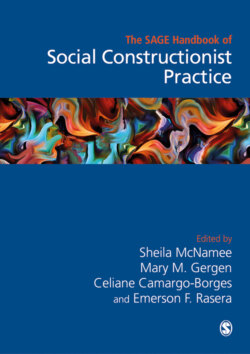Читать книгу The Sage Handbook of Social Constructionist Practice - Группа авторов - Страница 44
На сайте Литреса книга снята с продажи.
Research as Innovation
ОглавлениеThere is an extensive literature illustrating innovation in research. Yet, most of this literature focuses on ‘research in innovation’, ‘research and innovation’, or ‘research for innovation’ (Audretsch et al., 2019; Hjalager, 2010; Mazzucato, 2018; Ray and Street, 2005; Stilgoe et al., 2013). Less common is the sense of research as innovation, which is what we are proposing here.
Innovation is a way of describing research as creating possibilities, or, as Callon (1987) proposes, innovation is ‘society in the making’. This requires a level of sensing and presence from the researcher; a quality of attention to what is happening moment by moment in order to see what was unseen before. Creativity and imagination are core in research; they allow researchers to tap into the unknown. This differs from traditional forms of research where we often see researchers employing the same categories, instruments, and research questions that predecessors have employed. In other words, innovation is the generation of new meanings through critical examination of our assumptions about the phenomena (Mars, 2013) and what counts as data, what counts as analysis of that data, and the unfolding implications of our research (Alvesson and Sandberg, 2012).
Research as innovation centers on an intrinsic collaborative process among researchers and research participants in which information, observations, and other ‘data’ are shared, taking into consideration various vantage points, combining different perspectives and voices, inviting reorganization, reframing, and including alternative contexualizations as the research process unfolds. The expansion and generation of new meanings (traditionally identified as findings) is a process of innovation in the sense that opportunities for engagement with the topic and possibilities for change are amplified. The ‘intervention’ or transformation, from this perspective, occurs when multiple understandings invite a community to begin to question their taken-for-granted ways of being.
